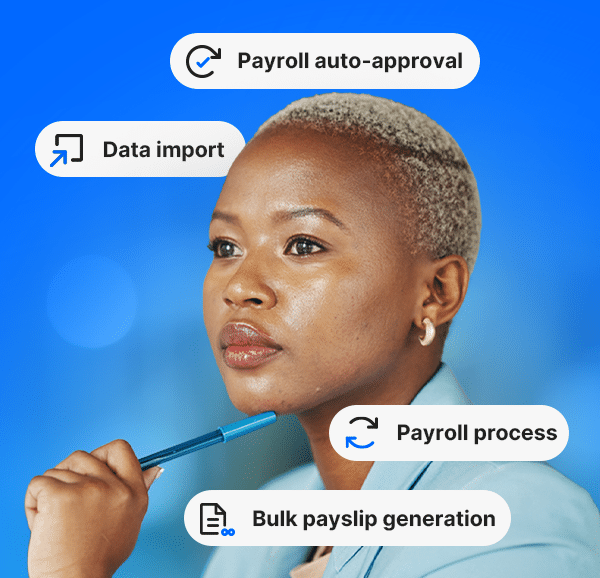by Ferdinand Dragtstra
This is the first in a series of blogs, where we look at challenges with pay and payments in developing and emerging markets.
In the developed world, dropdown#toggle” data-dropdown-placement-param=”top” data-term-id=”281299614″>unbanked are regularly overlooked.
Particularly in developing and where 52% of working adults report being very concerned about covering essential expenses such as health care, struggles with pay can affect employee satisfaction as well as productivity. Employees who are dropdown#toggle” data-dropdown-placement-param=”top” data-term-id=”281299614″>unbanked also present practical challenges for employers wanting to pay all their staff in a timely and accurate manner.
In this blog, we’ll explore what it means to be dropdown#toggle” data-dropdown-placement-param=”top” data-term-id=”281299614″>unbanked and the underbanked
Firstly, it’s important to draw the distinction between the dropdown#toggle” data-dropdown-placement-param=”top” data-term-id=”281299614″>Unbanked employees are those who have no dropdown#toggle” data-dropdown-placement-param=”top” data-term-id=”281299621″>financial institutions. Underbanked employees, on the other hand, tend to have basic dropdown#toggle” data-dropdown-placement-param=”top” data-term-id=”281299613″>financial services, but still have to make use of functions like check cashing to conduct their financial affairs.
There are several reasons why employees might find themselves in either of these two categories. For example, they might not be eligible for a dropdown#toggle” data-dropdown-placement-param=”top” data-term-id=”281299665″>banking systems or the finance industry. Alternatively, if they are of relatively dropdown#toggle” data-dropdown-placement-param=”top” data-term-id=”281299670″>emerging markets in particular, many workers in rural locations struggle to access banks. And even when working in urban centers, many run into problems when trying to send money to their families back home. Due to this lack of infrastructure, legacy dropdown#toggle” data-dropdown-placement-param=”top” data-term-id=”281299614″>unbanked and/or underbanked employees within your workforce runs much wider than you might think. Firstly, they deserve the same regularity and timeliness of pay as everyone else, which comes with an extra administrative burden for payroll and HR teams who have to adjust their dropdown#toggle” data-dropdown-placement-param=”top” data-term-id=”281299635″>banking services that dropdown#toggle” data-dropdown-placement-param=”top” data-term-id=”281299614″>unbanked also makes it extremely difficult, if not impossible, to establish a credit rating and access funds in the event of an emergency, such as an urgent car repair or medical treatment.
All this can make dropdown#toggle” data-dropdown-placement-param=”top” data-term-id=”281299614″>unbanked and underbanked
The growth of dropdown#toggle” data-dropdown-placement-param=”top” data-term-id=”281299614″>unbanked and the underbanked than it has been in the past. There are a range of dropdown#toggle” data-dropdown-placement-param=”top” data-term-id=”281299635″>banking services for all employees, helping them circumvent difficult debt traps:
-
Online money apps: these apps allow you to pay employees directly into a digital account on their dropdown#toggle” data-dropdown-placement-param=”top” data-term-id=”281299628″>financial transactions. A number of these dropdown#toggle” data-dropdown-placement-param=”top” data-term-id=”281299614″>unbanked or underbanked, to the point that they can actually represent a real-term pay rise. This dropdown#toggle” data-dropdown-placement-param=”top” data-term-id=”281299625″>mobile payments.
-
Digital payroll cards: these work in exactly the same way as a debit card from dropdown#toggle” data-dropdown-placement-param=”top” data-term-id=”281299648″>digital payments, make treasury services deployed within payroll and HR teams. These can integrate with traditional payroll functions to make it fast and easy to pay every employee accurately and on time, whether through traditional payments to dropdown#toggle” data-dropdown-placement-param=”top” data-term-id=”281299641″>mobile wallets.
In summary
Going above and beyond to support dropdown#toggle” data-dropdown-placement-param=”top” data-term-id=”281299612″>financial inclusion. What’s more, doing so can generate greater productivity, and enable better talent retention and acquisition, both of which can help improve your bottom line in the long term.
CloudPay has a range of tools that can help you support your the help of our treasury services here.


